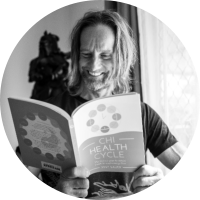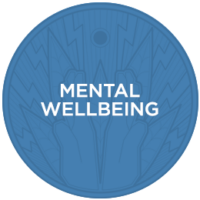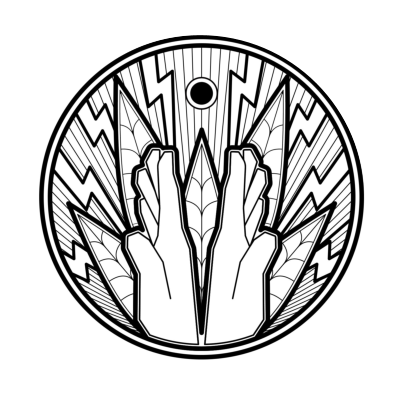Something unprecedented is happening in my clinic The number of people presenting with ‘Adult ADHD’ or stating that they have ‘late-onset ADHD’ have skyrocketed, since 2020. What used to be one or two per month has exploded to multiple people daily. I’ve been practicing Chinese Medicine for decades now,…
AddictionArticles Articles
Articles / Magic mushrooms
Posted August 12, 2009
Magic mushrooms
by Jost Sauer
Magic mushroom is the term popularly used to describe the mushrooms that have an hallucinogenic effect when consumed. According to Western research the principal psychoactive component of these mushrooms is psilocybin and the effects include significant visual, auditory and perceptual alterations. In lower doses magic mushrooms can induce hysterical laughter (as marijuana can do) but in higher doses there is a whole host of effects similar to those of more powerful hallucinogens such as LSD.
There is evidence to suggest that the properties of these particular mushrooms have been known about and used since Paleolithic times. Cave paintings from 5000 years ago appear to depict people inebriated from eating mushrooms but the assumption is that the mushrooms were probably used for divinatory or religious purposes rather than recreational. Like many of the plant-based hallucinogens, magic mushrooms were largely forgotten in the last few centuries (apart from use in isolated traditional communities) but were rediscovered by the hippies in the counter-culture decade of the 1960s. Even so, they were never as popular as LSD or marijuana, the hippie drugs of choice. Recently though, there has been a major revival of magic mushroom use and, like ecstasy, they have become a mainstream recreational drug. According to Andy Letcher, in his book Shroom at the 2004 Glastonbury festival in the UK, magic mushrooms were the drug of choice (Letcher, A. 2006, Shroom: a cultural history of the magic mushroom Faber and Faber, London).
There has also been a renewal of interest in the magic mushrooms by scientific researchers. A study, published in the journal Psychopharmacology in 2006, that aimed to evaluate the acute and longer-term psychological effects of psilocybin, found that it ‘can occasion mystical-type experiences having substantial and sustained personal meaning and spiritual significance’. Of course drug-users knew this all along but it is interesting that the experiment even happened given that psilocybin is banned and psychedelic research ended in the 60s (after the epidemic of abuse that the hippies instigated). It is also interesting that the findings were similar to those of the famous ‘Good Friday experiment’ conducted in 1962 (by researchers at John Hopkins) where subjects who were given psilocybin also reported having a mystical experience. Both experiments created a sensation in the mainstream press of their day but neither were news to the hundreds of thousands of recreational drug-users who regularly take mushrooms for this mystical element.
Magic mushrooms can be categorised as entheogens – psychotropic substances that ‘give birth to the god within’. Some scholars argue that the psychedelic experience derived from entheogens (including not only psilocybin mushrooms but also drugs such as daytura or ayahuasca) is even the historical basis of religion (Lamborn Wilson, P. Ploughing the Clouds : the search for Irish Soma. City Lights, SF 1999). Entheogens have been used for thousands of years in the religious or spiritual traditions of many cultures by shamans or trained initiates to structure individual relations with spirits. The shamans believed that these plants were spirits or Gods and that they could manifest or disappear at will (ibid). In this context it is interesting that there is a revival of magic mushrooms now in the West; a modern, rational and scientific culture addicted to proof, separated from the natural world and dismissive of spirituality. Of course the recreational use of mushrooms in the West is generally distinct from the shamanic use which was aimed at healing or accessing information. In his book Breaking Open the Head, Daniel Pinchbeck discusses a case where a westerner had taken psychedelic mushrooms in the recreational context. During his trip two huge mushroom spirits appeared and asked why he had eaten them. He said to get high. They seemed annoyed and told him that if he did it again they would kill him and then left. The inference is that whatever this property is of the mushrooms, it is to be called upon for a specific purpose – an approach shamans are trained in.
This interaction with spirit beings is a distinctive quality of the hallucinogenic drugs as opposed to the stimulant / party drugs such as speed or cocaine. I experimented widely with hallucinogens including LSD, mescaline and magic mushrooms in the 70s and early 80s and I always had experiences of journeying to different dimensions and meeting beings from other worlds. These places and beings seemed absolutely real. As Ralph Metzner points out in his book Ayahuasca (Metzner, R. 2006, Sacred Vine of Spirits: Ayauasca Park St Press, Rochester, Vermont) for those who are genuinely researching psychoactive substances the recognition of multiple worlds and the reality of spirit beings is becoming quite common. In addition, as illustrated in the findings of the recent psilocybin experiment, many Western-trained physicians and psychologists have acknowledged that hallucinogens can afford access to spiritual or transpersonal dimensions of consciousness. However, mainstream Western scientific or medical research tends to dismiss such claims. Experiences such as those I had are considered hallucinations based on archetypes drawn from the subconscious etc. This is due to the Western separation of mind, body and spirit.
In Traditional Chinese Medicine, which is based on a holistic, mind-body-spirit model, it is understood that there is much more to life than the material visible world (which is condensed, visible and heavy and considered Yin). There is also the spiritual world (which is ungraspable, ethereal, constantly shifting and considered Yang). Hallucinogenic drugs allow a shift in the balance towards the latter. In TCM, drugs use the organs as a platform to work from. It is as if the drug is the software and the organ the hardware. My research indicates that the Spleen is a key organ in magic mushroom trips. This is because the Spleen is responsible for digestion on both a physical level (explaining the vomiting frequently experienced prior to onset of trip) but also a mental level. It is the Spleen that governs boundaries within the physical domain but also between the concrete and abstract or the visible and invisible worlds. So this is where doorways are opened and other dimensions possibly accessed.
Drugs set the mind free into the world of energy and spirit. Mind is Yang, it is active, ungraspable, ethereal, invisible and non-substantial. It is fundamentally rootless and is constantly moving and expanding. Yin is substance and the mind is dependant on Yin to provide control, structure and boundaries for it. Yin allows linear, logical and constructive thought. Without Yin the activities of the mind cannot be used productively. In TCM hallucinations are considered an extreme of a normal function, a particular form of Yin and Yang disharmony in which the Yang is not confined by the Yin. This is why on psychedelic trips you become pure mind, pure thought. It is an intoxicating feeling but a percentage of mushroom-users do have a bad experience and this also illustrates how fragile the mind is without the control mechanism of the body. The body is like a safety net. It can store emotions and pain and keep them inaccessible from the conscious mind. Hallucinogenic drugs break the bonds that keep your mind in this safe space and suppressed emotions and feelings can be released.
As well as operating via the Spleen (the organ also associated with madness, psychosis or schizophrenia) hallucinogens also operate via the Heart which is associated with either joy and bliss or shock and panic (explaining good trips and bad trips). However, in Traditional Chinese Medicine, the Heart has another role, it houses the mental energies and controls all higher mental functions. It is said that the Heart stores the mind. Magic mushrooms can also be described as psychotomimetic or “madness mimicking” (Metzner p2). I have had many patients who had taken large doses and then had what is termed ‘psychotic’ episodes. Most were long-term drug users though and long-term hallucinogenic use does increases the imbalance between Yin and Yang; it separates body and mind. Accordingly, the first thing I do in terms of treatment (also with those who have psychosis from speed or ice) is to get the person back into the body. To do this I recommend specific forms of exercise, and food as well as Chinese raw herbs and Tui-na (therapeutic massage). I also advise avoiding activities that are overtly mental including meditation. Another factor in my work is looking at how to integrate any insights derived from the trip into the persons life in a beneficial manner.
Share this article:
About Jost Sauer
Jost Sauer is an expert in preventative health and Chinese medicine.
Jost pioneered lifestyle medicine for addiction, kickstarted a recovery revolution with his groundbreaking rehab program, and then adapted the program for everyone as the Chi Cycle lifestyle; a health-boosting, fat-burning feel-good day plan.
Jost has treated thousands of people including celebrities, CEOs and athletes, using his unique combination of Chinese medicine, acupuncture, chi-activation, motivational coaching and lifestyle. He offers individual sessions, training programs and retreats. Jost’s passion is to show everyone how to optimise their organ function, synch back in and reconnect to natural rhythms, and make every day medicinal and magical…
Related Articles
Why weekly date nights and romance advice fail – and how to address the invisible patterns that actually determine relationship success or failure. The Surface Solution Trap “Can you reignite intimacy and passion with weekly dates?” This question came up in my clinic recently, and while scheduled romance…
Forget everything you’ve been told about healing from relationship breakups. This groundbreaking method transforms heartbreak into an opportunity for authentic self-discovery and spiritual awakening. Why Traditional Heartbreak Advice Fails Most relationship recovery advice follows the same tired formula: take time to grieve, don’t rebound too quickly, work on yourself,…





